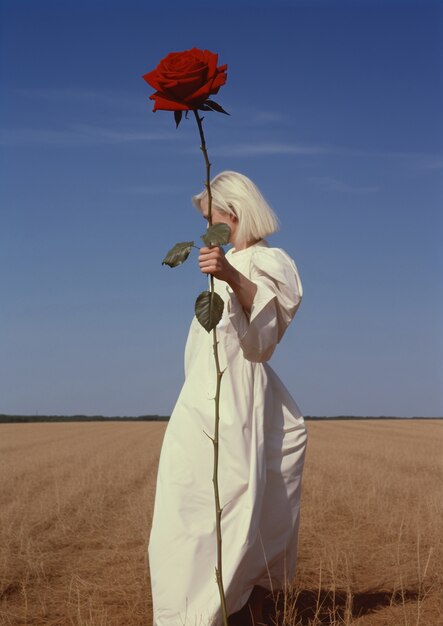The allure of roses has captivated the hearts and minds of gardeners and flower enthusiasts for centuries. Among the many varieties that grace gardens and bouquets, The King’s Roses, nurtured by the North West British Kingdom Association (NWBKA), stand out for their regal beauty and historical significance.
This article delves into the enchanting world of The King’s Roses, exploring their origins, unique features, cultivation tips, and frequently asked questions.
The Historical Significance of The King’s Roses
The King’s Roses are steeped in history, with a lineage that traces back to royal gardens and historical estates. These roses are not just flowers; they are symbols of elegance, resilience, and the rich heritage of British horticulture.
Origins and Legacy
The story of The King’s Roses begins in the royal gardens of England, where they were first cultivated to adorn the palaces and estates of kings and queens.
These roses were selectively bred for their striking appearance, fragrance, and hardiness, making them a favorite among the British nobility.
Over the centuries, The King’s Roses have been passed down through generations of gardeners and horticulturists, each adding their expertise and passion to enhance the beauty and resilience of these flowers. Today, the North West British Kingdom Association (NWBKA) continues this legacy, preserving and promoting The King’s Roses for modern gardeners to enjoy.
Unique Features of The King’s Roses
What sets The King’s Roses apart from other varieties is their distinctive characteristics, which make them a prized addition to any garden.
Exquisite Blooms
The King’s Roses are renowned for their large, full blooms that come in a range of colors, from deep crimson to soft pink and pure white. Each bloom is a masterpiece, with layers of velvety petals that create a stunning visual impact.
Fragrance
One of the most captivating features of The King’s Roses is their enchanting fragrance. These roses emit a rich, intoxicating scent that can fill a garden or room with their delightful aroma, making them perfect for cut flower arrangements and perfumes.
Resilience
Bred for the challenging climates of the British Isles, The King’s Roses are remarkably resilient. They are resistant to common rose diseases such as black spot and powdery mildew, and they thrive in a variety of soil types and weather conditions.
Longevity
With proper care, The King’s Roses can live and bloom for many years, making them a lasting addition to any garden. Their long lifespan is a testament to their robust genetics and the meticulous care they have received over the centuries.
Cultivating The King’s Roses: Tips and Techniques
Growing The King’s Roses can be a rewarding experience for both novice and experienced gardeners. Here are some tips and techniques to help you cultivate these royal blooms successfully.
Selecting the Right Location
The King’s Roses thrive in full sun, so choose a location in your garden that receives at least six hours of direct sunlight each day.
Ensure the soil is well-draining to prevent waterlogged roots, which can lead to root rot and other issues.
Soil Preparation
Before planting, prepare the soil by incorporating organic matter such as compost or well-rotted manure.
This will improve soil fertility and structure, providing the roses with the nutrients they need to grow strong and healthy.
Planting
When planting The King’s Roses, dig a hole that is wide and deep enough to accommodate the root ball.
Place the rose in the hole, ensuring that the graft union (the swollen area where the rose is grafted onto the rootstock) is at or just above the soil level. Fill the hole with soil, firming it gently around the roots to eliminate air pockets.
Watering
Water the roses thoroughly after planting and continue to water regularly, especially during dry periods.
The King’s Roses prefer consistent moisture but avoid overwatering, as this can lead to root problems. Mulching around the base of the plants can help retain soil moisture and suppress weeds.
Pruning
Regular pruning is essential to maintain the health and shape of The King’s Roses. Prune in early spring before new growth begins, removing dead, damaged, or diseased wood.
Cut back the remaining stems to encourage new growth and improve air circulation within the plant.
Fertilizing
Feed The King’s Roses with a balanced rose fertilizer in early spring, and again in mid-summer to promote vigorous growth and abundant blooms. Follow the manufacturer’s instructions for application rates and methods.
Pest and Disease Control
While The King’s Roses are relatively disease-resistant, it’s important to monitor for pests such as aphids, spider mites, and rose slugs.
Use organic or chemical controls as needed, and practice good garden hygiene by removing fallen leaves and debris that can harbor pests and diseases.
The Role of NWBKA in Preserving The King’s Roses
The North West British Kingdom Association (NWBKA) plays a crucial role in preserving and promoting The King’s Roses.
This organization is dedicated to the conservation of heritage rose varieties and the education of gardeners about the importance of these historical blooms.
Conservation Efforts
NWBKA maintains extensive rose gardens and collections, ensuring that The King’s Roses and other heritage varieties are preserved for future generations.
They engage in propagation and breeding programs to maintain the genetic diversity and health of these roses.
Educational Programs
Through workshops, seminars, and publications, NWBKA provides valuable information and resources to gardeners interested in growing The King’s Roses.
They offer guidance on best practices for cultivation, pest and disease management, and garden design.
Community Engagement
NWBKA fosters a sense of community among rose enthusiasts by organizing events such as garden tours, rose shows, and plant sales. These events provide opportunities for gardeners to share their experiences, learn from experts, and celebrate their love of roses.
Conclusion
The King’s Roses are more than just beautiful flowers; they are living pieces of history, cherished for their elegance, fragrance, and resilience. Through the efforts of the North West British Kingdom Association (NWBKA), these regal blooms continue to thrive and inspire gardeners around the world.
By understanding their unique features and following the cultivation tips provided, you can enjoy the splendor of The King’s Roses in your own garden, creating a lasting legacy of beauty and tradition.
Frequently Asked Questions
1. What makes The King’s Roses different from other rose varieties?
The King’s Roses are distinguished by their large, full blooms, enchanting fragrance, resilience to common rose diseases, and historical significance. They have been cultivated and preserved for centuries, making them a unique and prized addition to any garden.
2. How can I ensure my King’s Roses thrive in my garden?
To ensure The King’s Roses thrive, choose a sunny location with well-draining soil, prepare the soil with organic matter, water regularly but avoid overwatering, and prune annually to maintain plant health and shape.
3. Are The King’s Roses suitable for all climates?
The King’s Roses are bred to be resilient and can thrive in a variety of climates, especially those similar to the British Isles. However, they may require additional care in extreme climates, such as extra mulching in cold regions or shade in hot, dry areas.
4. How often should I fertilize The King’s Roses?
Fertilize The King’s Roses twice a year: once in early spring as new growth begins, and again in mid-summer to support continuous blooming. Use a balanced rose fertilizer and follow the manufacturer’s instructions for application.

 Uncategorized3 months ago
Uncategorized3 months ago
 Uncategorized7 months ago
Uncategorized7 months ago
 Uncategorized4 months ago
Uncategorized4 months ago
 Uncategorized4 months ago
Uncategorized4 months ago










